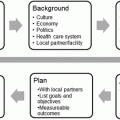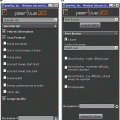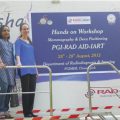© Springer Science+Business Media New York 2014
Daniel J. Mollura and Matthew P. Lungren (eds.)Radiology in Global Health10.1007/978-1-4614-0604-4_11. Introduction
(1)
RAD-AID International, 2620 Spencer Road, Chevy Chase, MD 20815, USA
(2)
RAD-AID International, Chevy Chase, MD, USA
(3)
Lucile Packard Children’s Hospital, Stanford University Medical Center, Palo Alto, CA, USA
Matthew P. LungrenVice President of Education, Assistant Professor of Radiology (Corresponding author)
Email: mlungren@rad-aid.org
Background
Historically, international radiology solutions for the developing world have been frequently dominated by hardware, since hardware (i.e., the imaging machine itself) is the most capital and cost-intensive component of radiology service implementation. In other words, if a group or institution had an ultrasound unit to donate, then it was an ultrasound solution offered to the hospital in need. This text, however, tries to reverse this thinking, by first assessing the clinical and epidemiological need (i.e., what diseases are prevalent in a community and how will they be treated) in order to then find the right hardware to address that need. The hardware is only identified after the full deficiency is measured.
In designing this text, we drew significant inspiration from our experience in founding and managing RAD-AID International, a nonprofit organization dedicated to increasing and optimizing radiology services in the developing world [1]. Much like this text, RAD-AID employs a multidisciplinary approach to radiology service assessment and implementation, and the overall approach is based on five key pillars, all of which are covered in this text: (1) economic strategies for financial sustainability; (2) public health radiology for population-based approaches (screening, safety, epidemic detection, and cancer prevention); (3) clinical model formulation tailored to the needs and resources of regions and communities; (4) technology innovation and optimization including hardware, software, and web-based strategies for radiologic data communications; and (5) public policy for healthcare system development at the government and international institutional level. The works of RAD-AID and many other organizational peers and partners were included in this text in order to demonstrate diverse strategic approaches, technical designs, and clinical models among very different regional and cultural contexts. The unifying underlying objective of the pages that follow is to address ways to achieve sustainable long-term imaging strategies for limited resource regions.
When it comes to developing nations, resources in health care are generally scarce, while radiology equipment and imaging services are relatively expensive and require a well-trained team with coordinated components. It makes sense to have other healthcare and infrastructural resources available before implementing radiology services in a medical or surgical context. This way, funds are not wasted on high technology placed in a setting without the basic infrastructure or complementary medical-surgical resources necessary to effectively use radiological imaging. Donated resources are optimized for the highest return to society. Asking questions in the context of the overall health system can help teams assess how effective radiology imaging services can be in the field. Does it make sense to have chest radiograph equipment for detecting pneumonias or tuberculosis if the clinic or country has no antibiotics for treating these diseases? What electric power is necessary for these advanced medical imaging resources to be used and maintained without interruption or breakage? Should a mammogram program be set up if there are no resources for doing biopsies of the masses found on abnormal mammograms, or if there are no surgeons to operate on the detected cancer?
Stay updated, free articles. Join our Telegram channel

Full access? Get Clinical Tree






